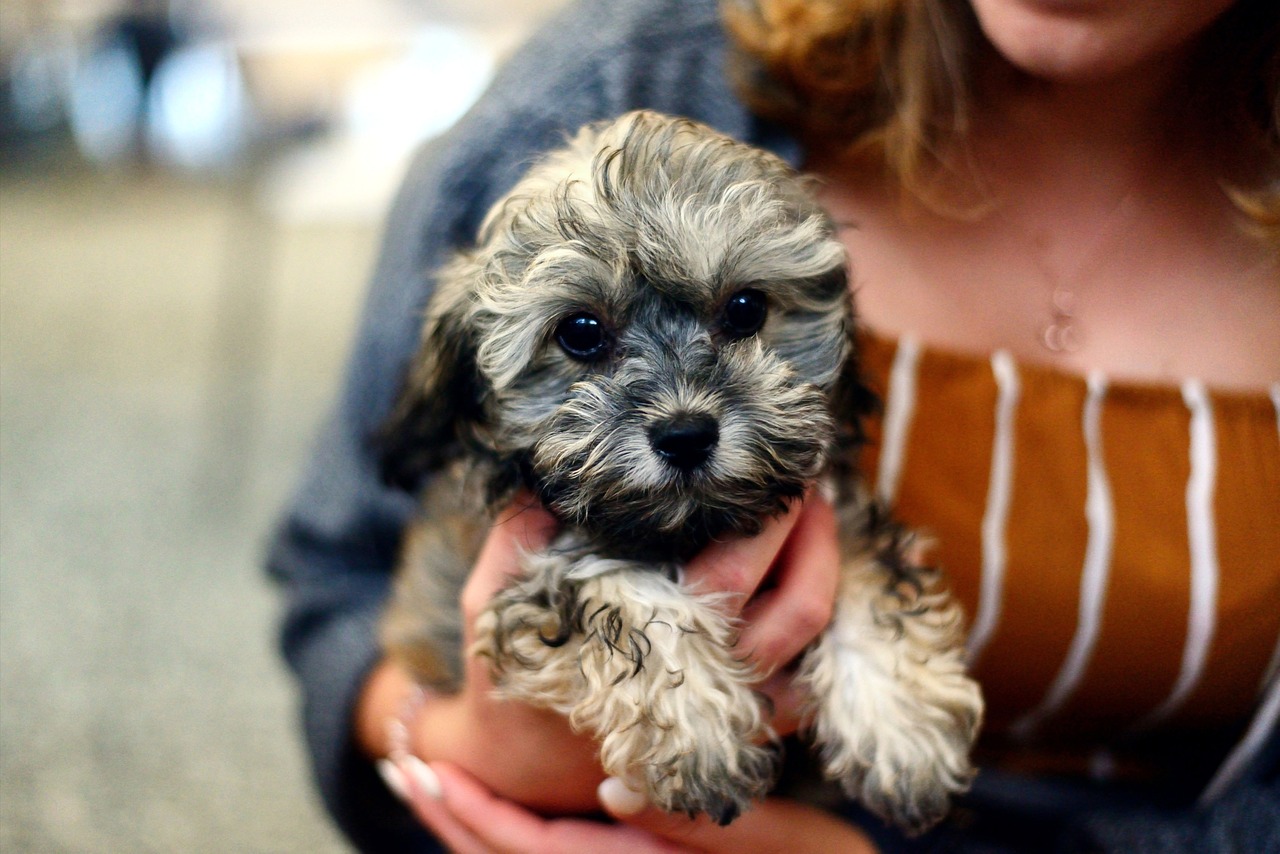Remember, if accidents happen indoors, avoid punishing your puppy. Instead, try making a noise or saying “uh-oh” to grab their attention, which will likely stop them. Immediately and gently pick up your puppy, take them outside, and give them plenty of praise when they finish their business. It’s also important to clean any soiled areas with pet stain cleaning products to prevent your pup from being drawn to the same spot again.
Many owners find success by placing a bell on the door handle and training their puppy to ring it when they need to go out. Start by ringing the bell yourself as you exit with your dog, and praise them when they learn to ring it on their own. These habits may take some time to evolve.
When you have to leave your puppy in a crate for several hours during the day, make sure to plan ahead. If you’re unsure how long your puppy can hold it, use the month-plus-one rule. Take your puppy’s age in months and add one, and that’s the maximum number of hours they should be able to comfortably hold it between potty breaks. For example, a 3-month-old puppy plus one equals 4 hours they can stay in the crate without making a mess.
Don’t forget to take your puppy out for one last potty break before bedtime. Although they can usually hold their bladder for longer periods while asleep, it’s still important to give them the opportunity to go before settling in for the night.
The duration of potty training varies depending on the puppy and the schedule you follow. If you start training early, a 6-month-old puppy can usually be relied upon to eliminate outside most of the time. However, if you’re not seeing progress, it’s a good idea to have your puppy checked by a veterinarian. They may have a urinary tract infection or another health issue that’s causing the delay in house-training.
By establishing a daily routine for meals, walks, playtime, and other activities, you and your puppy can create a structured environment that promotes successful potty training. By incorporating a daily routine that includes scheduled meals, walks, playtime, and other activities, you and your furry friend will be well on your path to achieving success in potty training. However, it’s important to keep in mind that this process takes time and patience, so don’t expect overnight results.

